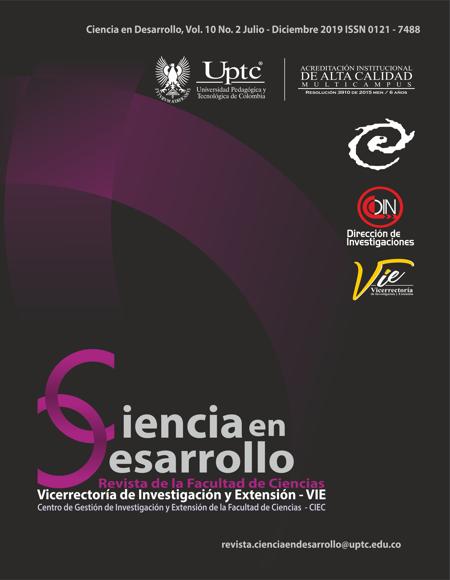Effect of a priori distributions in Bayesian D-optimal designs for a correlated non-linear model

Abstract
In practice, complications can arise when constructing optimal designs for non-linear regression models. One of the major problems is when the observations are correlated, since they are taken from the same individual, object or experimental unit. When using the D-optimality criterion, it depends both on the parameter vector of the model and on the correlation structure assumed for the error term. One way to avoid this dependence is through the inclusion of a priori distributions in the D-optimality criterion. In this paper we study the effect of the choice of different a priori distributions, such as the Uniform, Gamma and Lognormal distributions in obtaining the D-optimal designs for a non-linear model, when the errors present different correlation structures. The designs are found by maximizing the approximate D-optimality criterion by the Monte Carlo method. In addition, a general methodology is proposed to find D-optimal designs for any type of non-linear model in the presence of correlated observations. Finally, it is proposed to compare the designs found by calculating the efficiencies taking as a reference design the one obtained with the a priori Uniform distribution. The methodology established in a case study is applied, and it is concluded that the designs obtained depend as much on the correlation structure as on the a priori distribution considered.
Keywords
D-optimal design, non-linear models, correlation structure, Fisher Information Matrix, a priori distributions
References
[1] J. Kiefer, “Optimum experimental designs”, Journal of the Royal Statistical Society. Series B (Methodological), pp. 272-319, 1959.
[2] J. Kiefer and J.Wolfowitz, “The equivalence of two extremum problems”, Canadian Journal of Mathematics, vol. 12, no. 5, pp. 363-365, 1960.
[3] V. Fedorov, “Theory of Optimal Experiments”, Academic Press, 1972.
[4] F. Pukelsheim, “Optimal design of experiments”, SIAM, vol. 50, 1993.
[5] G. E. Box and H. Lucas, “Design of experiments in non-linear situations”, Biometrika, vol. 46, no. 1/2, pp. 77-90, 1959.
[6] G. E. Box and W. G. Hunter, “Sequential design of experiments for nonlinear models. In Proceedings IBM Scientific Computing Symposium: Statistics”, pp. 113-137, 1965.
[7] H. Chernoff, “Locally optimal designs for estimating parameters”, Annals of Mathematical Statististics, no. 24, pp. 586-602, 1953.
[8] I. Ford, B. Torsney, and C. F. J. Wu, “The use of a canonical form in the construction of locally optimal designs for nonlinear problems”, Annals of Mathematical Statististics, vol. 54, no. 2, pp. 569-583, 1992.
[9] T. E. O'Brien, “A note on quadratic designs for nonlinear regression models”, Biometrika, vol. 79, no. 4, pp. 847-849, 1992.
[10] H. Dette, V. B. Melas, and W. K. Wong, “Optimal design for goodness-of-fit of the michaelis menten enzyme kinetic function”, Journal of the American Statistical Association, vol. 100, no. 472, pp. 1370-1381, 2005.
[11] L. Pronzato and É. Walter, “Robust experiment design via stochastic approximation”, Mathematical Biosciences, vol. 75, no. 1, pp. 103-120, 1985.
[12] K. Chaloner and K. Larntz, “Optimal bayesian design applied to logistic regression experiments”, Journal of Statistical Planning and Inference, no. 21, pp. 191-208, 1989.
[13] A. Pázman, “Criteria for optimal design of small-sample experiments with correlated observations”, Kybernetika, vol. 43, no. 4, pp. 453-462, 2007.
[14] D. Ucinski and A. Atkinson, “Experimental design for time-dependent models with correlated observations”, Studies in Nonlinear Dynamics and Econometrics, vol. 8, no. 2, 2004.
[15] M. Amo-Salas, J. López-Fidalgo, and V. López-Ríos, “Optimal designs for two nested pharmacokinetic models with correlated observations”, Communications in Statistics-Simulation and Computation, vol. 41 ,no. 7, pp. 944-963, 2012.
[16] S. Campos-Barreiro and J. López-Fidalgo, “Doptimal experimental designs for a growth model applied to a holstein-friesian dairy farm”, Statistical Methods and Applications, vol. 24, no. 3, pp. 491- 505, 2015.
[17] D. A. Ratkowsky, “Nonlinear Regression Modeling: A Unifed Practical Approach”, Marcel Dekker, 1983.
[18] A. Atkinson, A. Donev, and R. Tobias, “Optimum experimental designs, with SAS”, Oxford University Press, vol. 34, 2007.
[19] W. G. Müller, L. Pronzato, J. Rendas, and H. Waldl, “Efficient prediction designs for random fields”, Applied stochastic models in business and industry, vol. 31, no. 2, pp. 178-194, 2015.
[20] A. Zhigljavsky, H. Dette, and A. Pepelyshev, “A new approach to optimal design for linear models with correlated observations”, Journal of the American Statistical Association, vol. 105, no. 491, pp. 1093-1103, 2010.
[21] S. Huet, A. Bouvier, M.-A. Poursat, and E. Jolivet, “Statistical Tools for Nonlinear Regression: A Practical Guide with S-PLUS and R Examples”, Springer Science and Business Media, 2004.
[22] C. D. Correa Álvarez, “Búsqueda de diseños cuasi-óptimos eficientes a partir de un diseño D-óptimo para observaciones correlacionadas espacialmente”, Universidad Nacional de Colombia Sede Medellín.
[23] R Core Team. R: “A Language and Environment for Statistical Computing”, R Foundation for Statistical Computing, Vienna, Austria, 2018.
[24] S. E. Rosenbaum, “Basic pharmacokinetics and pharmacodynamics: An integrated textbook and computer simulations”, John Wiley and Sons, 2016.